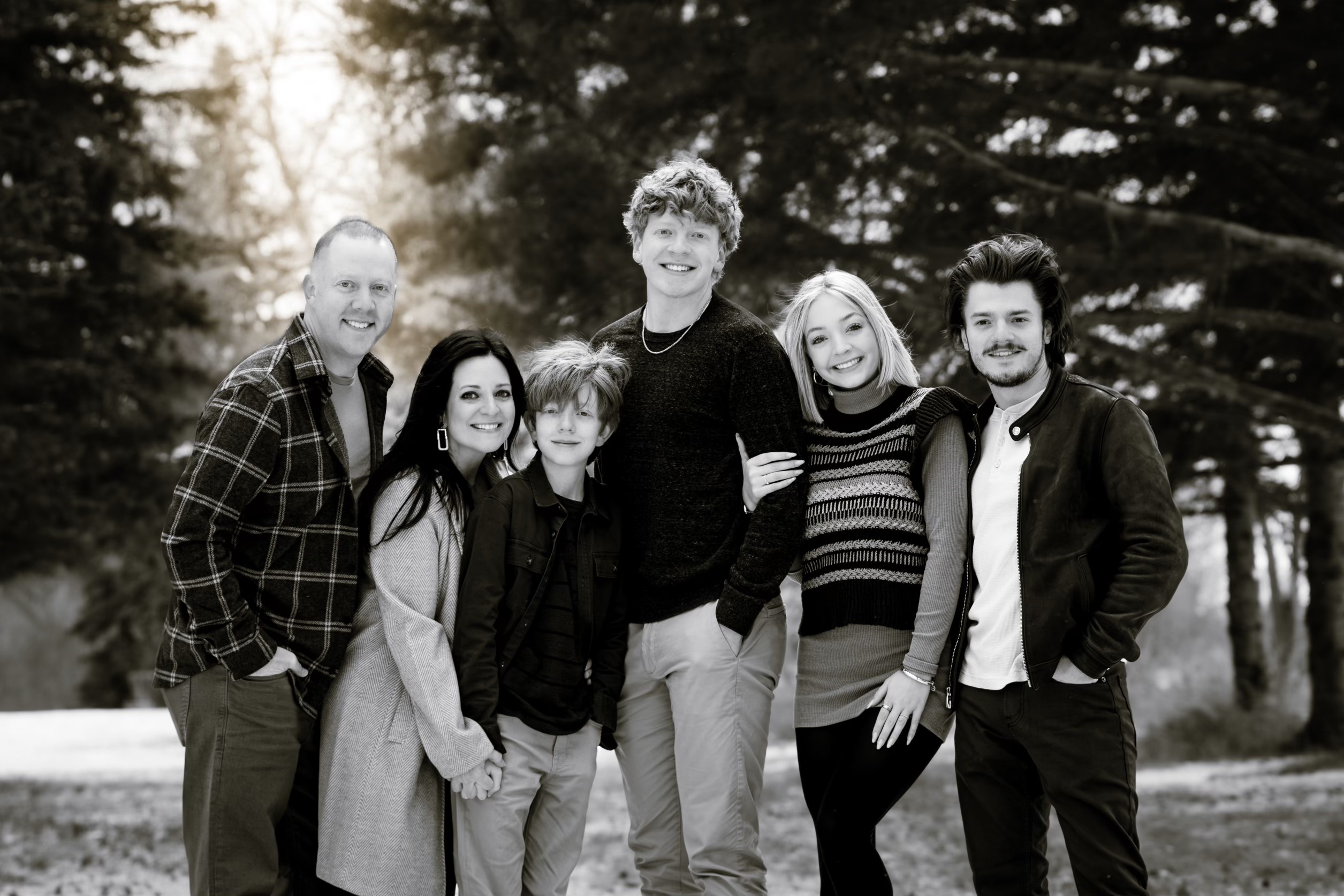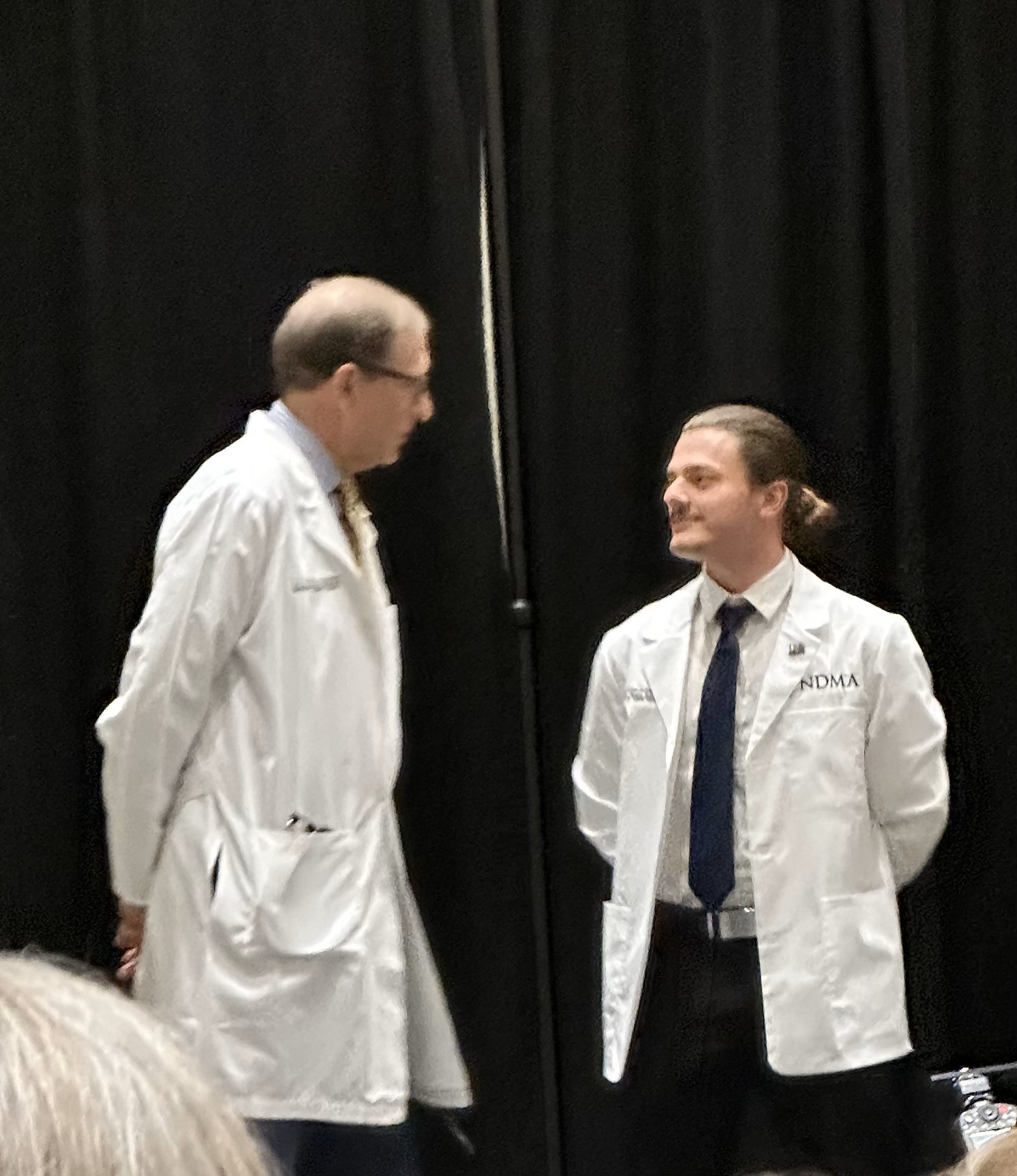
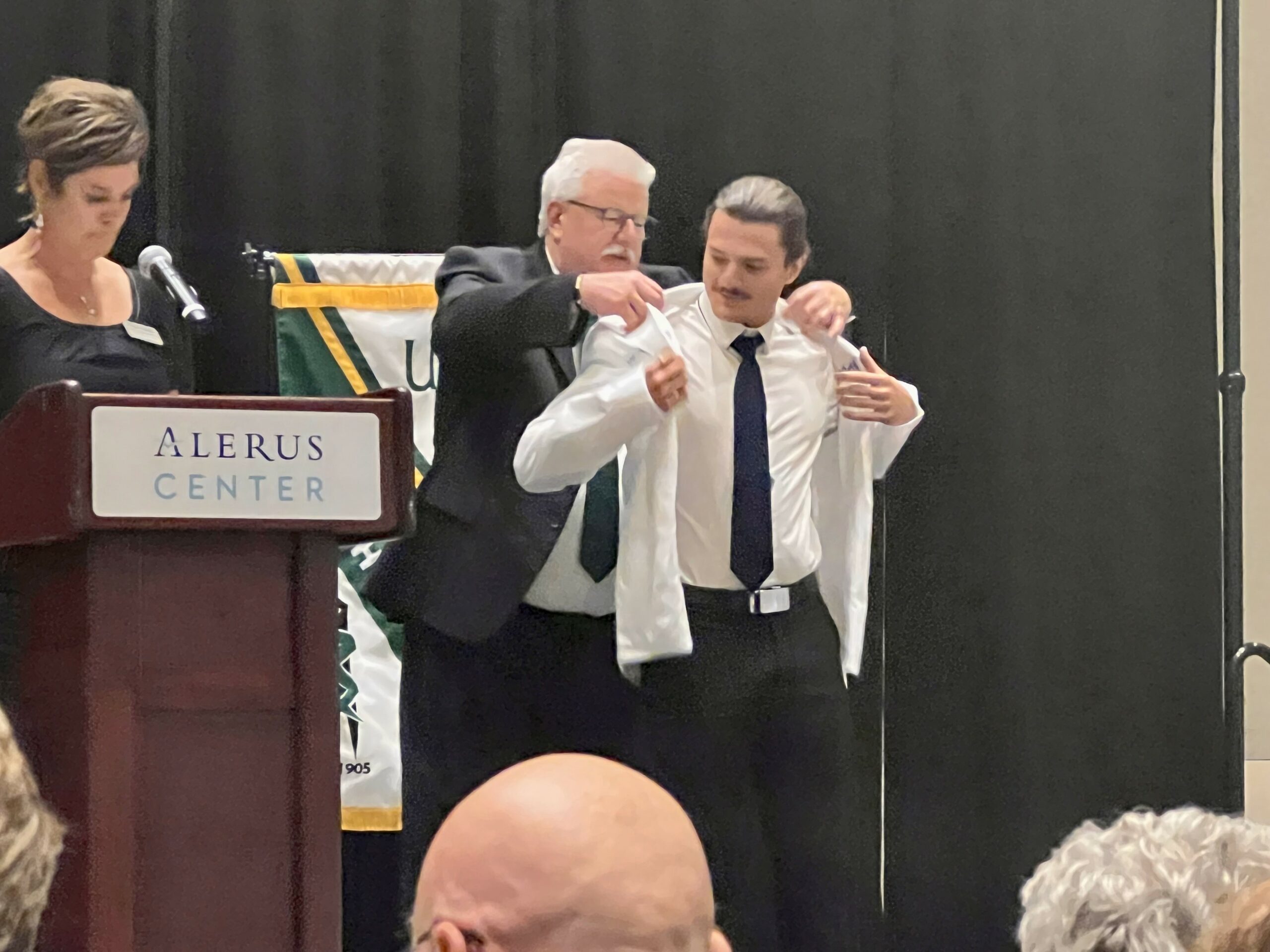
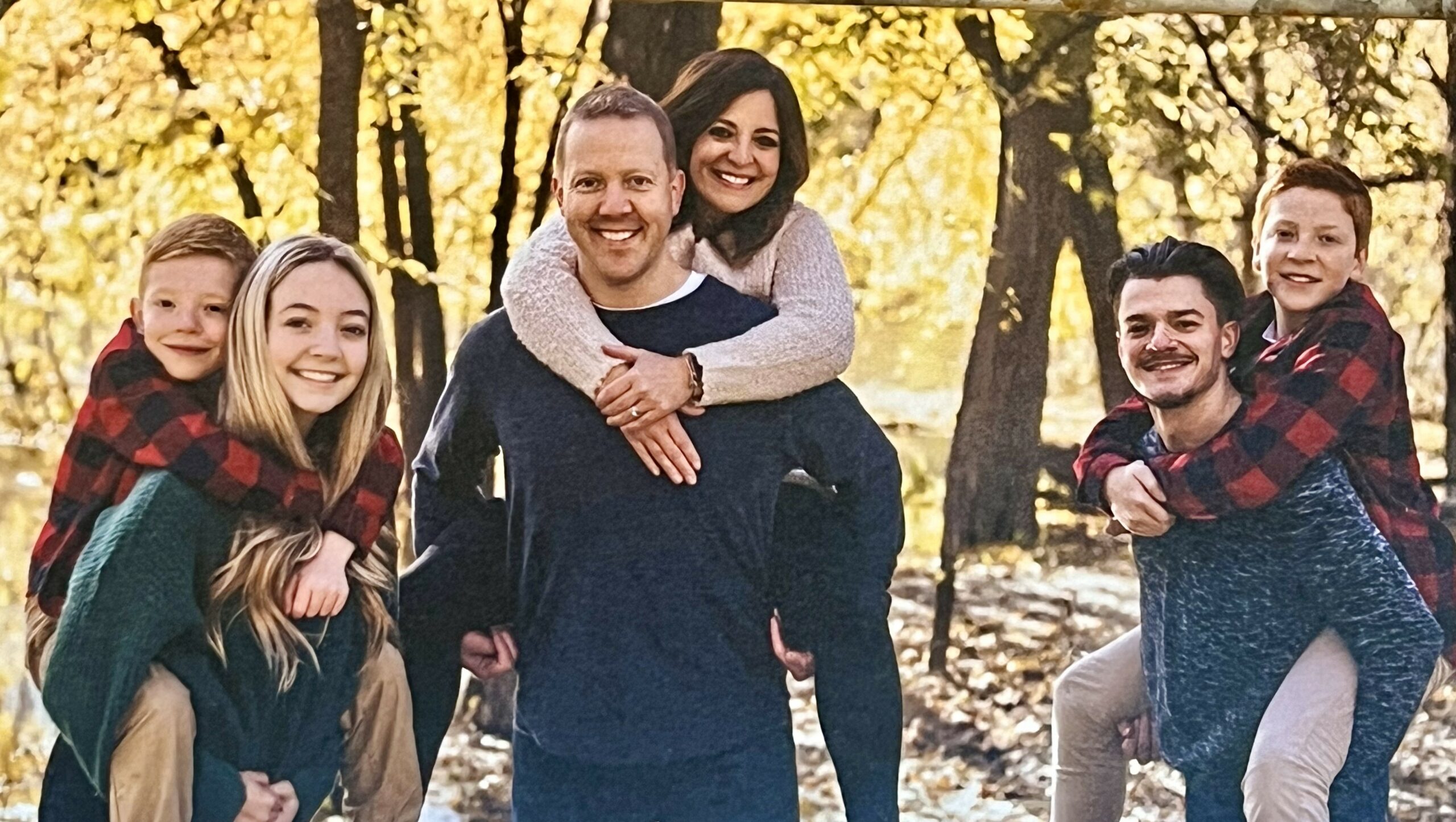
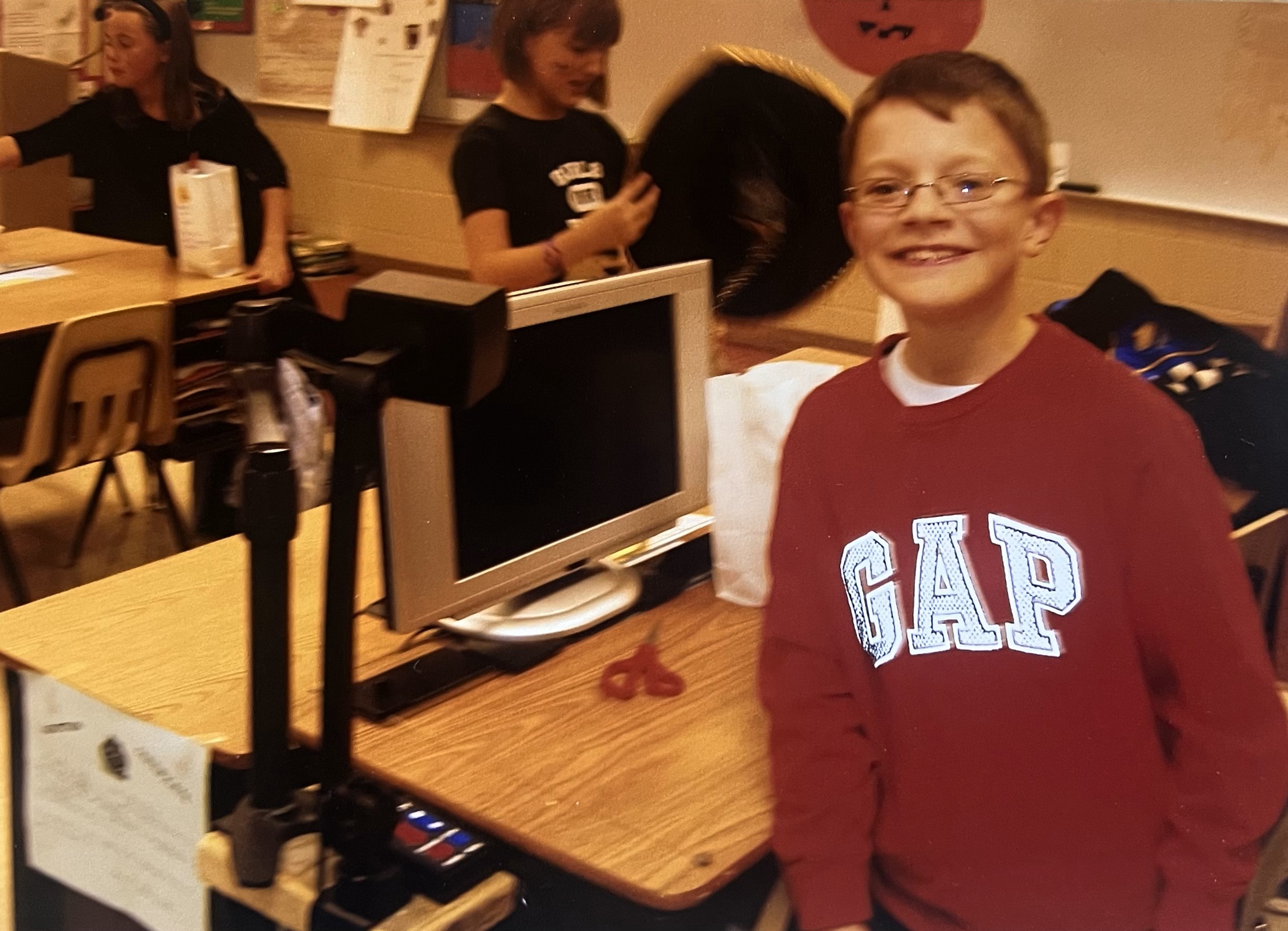
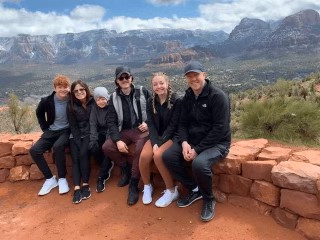
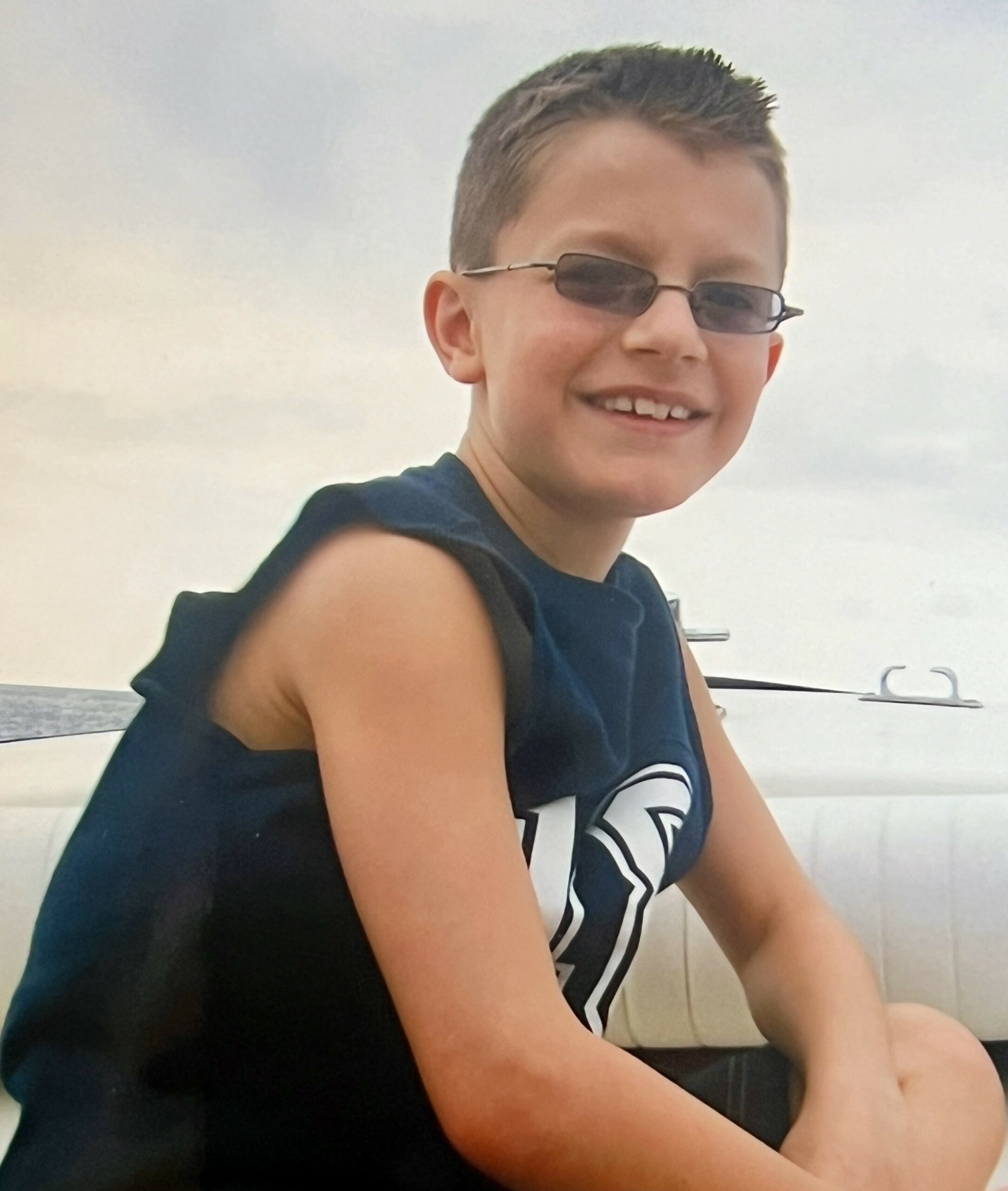
“I’m legally blind,” Paxton Franke said.
“What that means functionally is that I have no vision in the center of my eye, but my peripheries intact, which helps me mobilize and get around.
Well, an interesting challenge has been explaining why I can’t look people in the eye like we have, a culture where that’s very important, especially when you have trust in medicine.
And if I were to look you in the eye, I can no longer see you,” Franke said.
Paxton credits the support of his family and assistive technology for helping him to achieve his dreams. Here he is at the White Coat ceremony earlier this year at UND, another step toward his goal of becoming a doctor.
“Once you feel independent, you can feel confident in something and strive further,” Franke said. “I do not believe that I would be attempting a career in medicine without the independence given by assistive technology.”
Assistive technology has been more than just a tool for Paxton. It’s been a lifeline, allowing him to pursue his passion for medicine. His desk, for example, has eight options to help him study, read, take notes and more.
“It has both revolutionized and provided a path for my aspirations.
“The ability to have a camera in your pocket, right?”, Franke said. “ One might not think that’s necessarily able to be used for assistive technology, but it really is like, you know, going to a restaurant and being able to snap a picture of the menu and zooming in and being able to read it myself. Like, that’s amazing.”
And his journey hasn’t been without its challenges. But Paxton found ways to adapt and overcome. The exam room is one example.
“I have hooked my iPhone to a TV. I can either do wireless streaming through, like, Apple TV or something, or just do, and make like a little dongle that goes an HDMI cord,” Franke said.
“I’ll use the camera mounted on an arm, and then I can zoom in on, you know, the patient’s eyes. And I can, you know, do the whole the whole thing from a distance and look at their eyes over the shoulder. and that has been fine. Like looking in the mouth. You can just use an endoscope, you know, just like a camera on the end of a to put a plastic sheet over it.”
Paxton’s story is a powerful reminder that with determination and the right support, no dream is out of reach.
“I’ve had many experiences in my life where people like, I don’t think you can do that, or I’m worried that, you know, x, Y, and Z would happen,” Franke said. “And there’s always been a way around. There’s always been an adaptation to be made or, a new path to follow.
Right. I think with some of the unique hardships that people with disabilities face, it provides an opportunity for ingenuity. And I think that the limitations are far beyond what is expected.”
In Grand Forks for North Dakota Assistive, I’m Tom Gerhardt.
